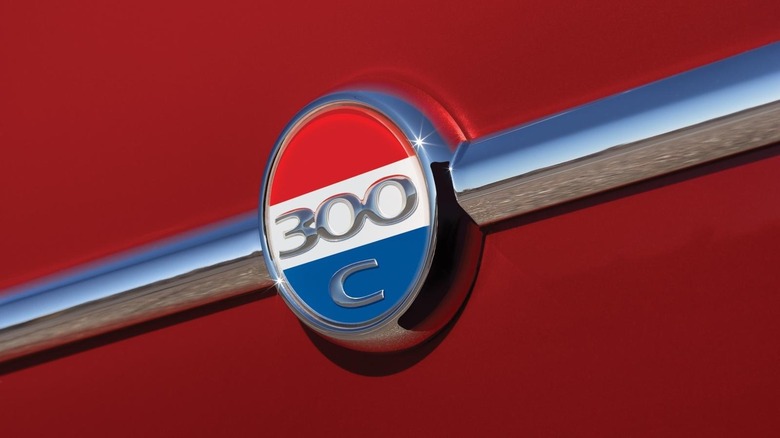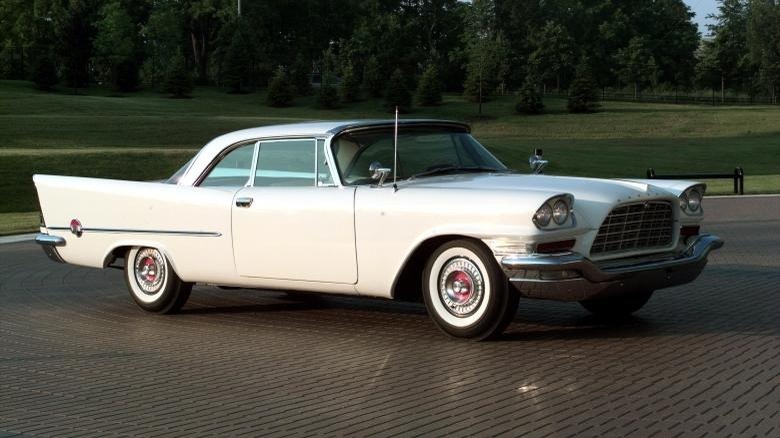What Does The 'C' Stand For On A Chrysler 300C?
The 2023 model year proved to be the last hurrah for the 300 sedan, which wrapped up production following Chrysler's parent company Stellantis' decision to discontinue a range of its ICE models, including the 300's platform mates Dodge Charger and Dodge Challenger. To send it off in style, Chrysler created the most extreme final version of the 300, a 6.4-liter HEMI-powered Chrysler 300C. The 300C made 485 horsepower and 475 lb-ft of torque, with production limited to just 2,200 examples, representing a fitting send-off for the formerly popular sedan.
That astounding output meant that the 2023 Chrysler 300C is now the most powerful Chrysler 300 model ever, while the limited production underlines its high exclusivity. But the 300C name wasn't as unique as all that, because we've heard it all before. Many times, in fact. However, knowing or driving a 300C model doesn't necessarily imply understanding what the C stands for or why it's there.
The C designation on modern 300Cs is a nod to the original 300C
The use of lettering on Chrysler 300 models began in 1955 with the C-300. Since then, every new model of the Chrysler 300 had the next letter of the alphabet added to its name, starting with the 300B in 1956 and progressing through the alphabet order to 300L in 1965 (although Chrysler skipped the letter "I"), before the sequential letter system was discontinued. The alphabetical naming convention didn't resume until the 1999 model year, when Chrysler released the 300-M, which was available through the 2004 model year.
Chrysler would again disrupt the sequential order in 2005 by reintroducing the 300C, purportedly as an homage to the original 1957 300C, which was the first 300 model to feature the legendary 392 cubic-inch (6.4-liter) HEMI engine. Under the hood of the 1957 300C, the V8 made 375 horsepower and 420 lb-ft of torque. Chrysler also offered a higher-output, limited edition variant (only 18 examples were made) of the 392 HEMI engine that was good for 390 hp. The 1957 300C itself was well-equipped for the era, offering power windows, bench seats, air conditioning, and a disc-based audio system.
Hence, modern 300Cs tended to recall not only model-specific performance characteristics of the classic 300C, but its "luxuriousness" as well. Fittingly, the "C" letter designation in modern Chrysler 300 models indicates that the model in question is both top-of-the-line and a high-performance version of the Chrysler 300. As well as the 6.4-liter, modern 300Cs typically feature the 5.7-liter HEMI engine.

